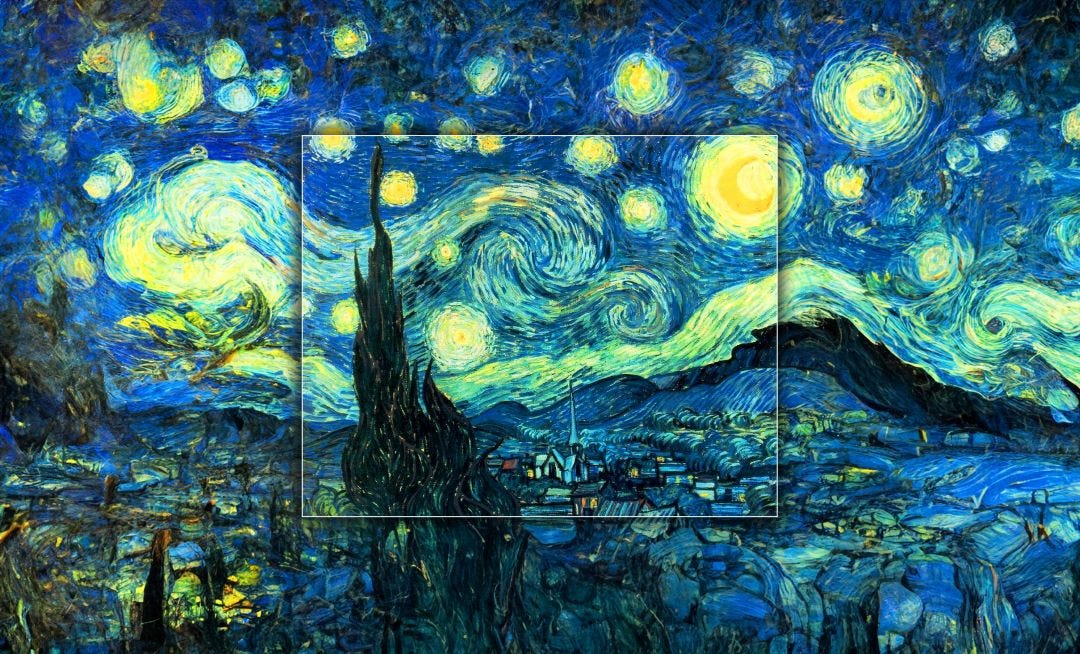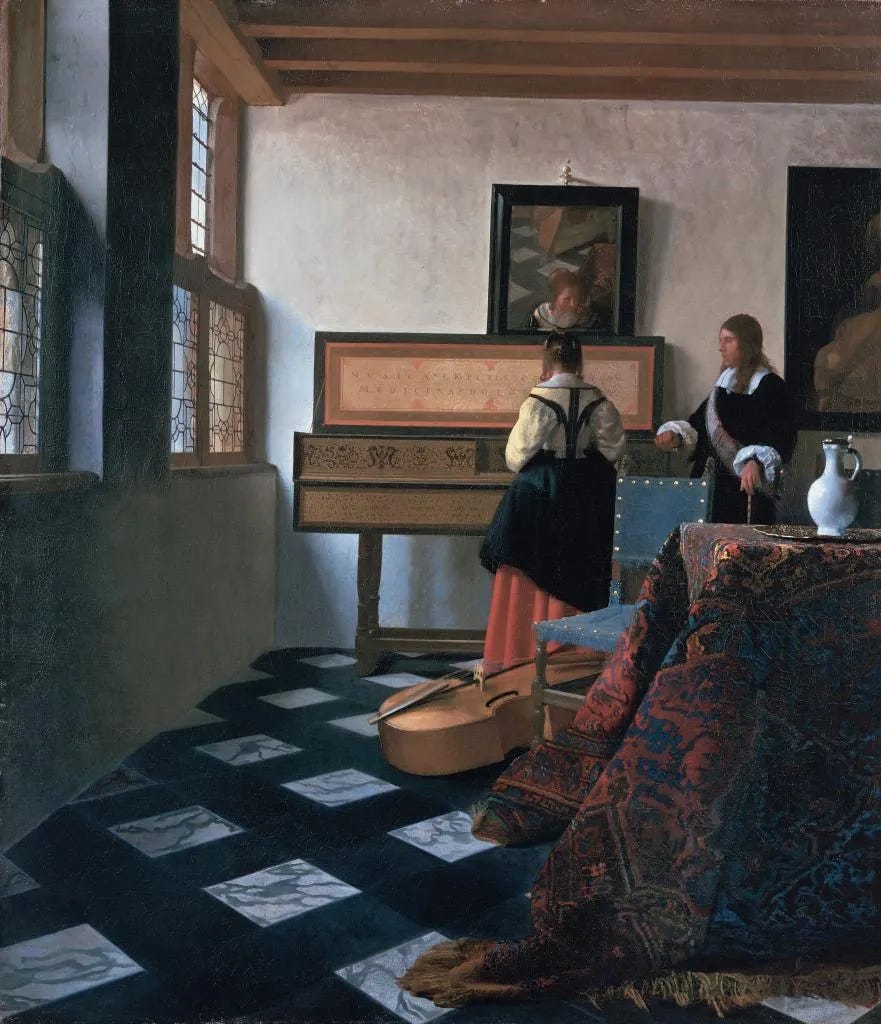The Work of Art in the Age of Artificial Reproduction
Reproduction Isn’t Creativity, and AI Isn’t Art
NOTE: A version of this essay was originally published in Jacobin in May, 2023.
In the 2013 film Tim’s Vermeer, libertarian actor Penn Gillette shows us his friend Tim Jenison’s efforts to reproduce the techniques of the 17th century Dutch painter Johannes Vermeer. To this end, Jenison, a software company executive and visual engineer, develops a series of elaborate methods that make use of mirrors and light to replicate Vermeer trademarks like field depth and chromatic aberration.
The documentary itself is entertaining enough, and Jenison’s recreation of Vermeer’s 1660s work The Music Lesson is certainly not unimpressive as a feat of engineering. Both Jenison and Gillette, however, ultimately mistake the creation for something it’s not. In the narrow conception offered by Tim’s Vermeer, art is simply a technology like anything else — a method, or a collection of methods, that aspire to represent reality with as much fidelity as possible. There is no social or cultural process involved, no inspiration beyond an act of mechanical production, and no higher purpose to Vermeer’s own project beyond photorealism.
In his commentary, Gillette gushes about the “photographic” and “cinematic” qualities of Vermeer’s work without ever grappling with its much more interesting and abstract dimensions. “My friend Tim painted a Vermeer! He painted a Vermeer!” Gillette exclaims of what is basically the equivalent of an intricate experiment in painting-by-numbers; a derivative simulacrum of something beautiful whose existence misconstrues the very idea of beauty itself.
Both in thesis and execution, Tim’s Vermeer was a perfect forerunner to the effervescent news cycle that continues to surround generative AI. From paintings to AI-generated podcast conversations to script writing and beyond, a concerted effort is currently underway to supplant human-driven creativity with computerized automation — while dispensing with the entire notion of art as we’ve known it for thousands of years.
Like any technology-driven industrial process, the advent of AI may well end up having profound social and material implications. Some of these may ultimately be positive. But beneath the transhumanist utopianism of Silicon Valley is invariably found the same imperative that has driven capitalism since the 19th century — namely, a relentless drive toward ever-more efficient production at ever-lower cost — and there is little reason to believe AI, at least in its current iteration, will be any different.
In the cultural realm, the results will continue to be exceptionally crude: ersatz paintings crafted by computer (sold, perhaps, in a marketplace of artificially generated scarcity like cryptocurrency or NFTs); formulaic music recorded by CGI pop stars who do not actually exist; writer’s rooms replaced by generative algorithms that reduce the nuances of dialogue and plot construction to a Fordist production process with few (or even no) actual writers involved.
Such developments, among other things, are a threat to artists and cultural workers. As artist Molly Crabapple recently observed, existing apps like Stable Diffusion and Midjourney can already generate detailed images based on nothing more than text prompts for next to no money. “They are faster and cheaper,” she writes,
than any human can be and while their images still have problems — a certain soullessness, perhaps, an excess of fingers, tumors that sprout from ears — they are already good enough to have been used for the book covers and editorial illustration gigs that are many illustrators’ bread and butter.
What these fabrications are not and will never be, however, is art.
Like Jenison and Gillette, the most effusive boosters of AI culture fundamentally mistake reproduction for creation and incorrectly see realism as synonymous with artistic expression. In this conception, creativity is a purely mechanistic endeavour: art of every kind — paintings, films, music, poetry — being nothing more than the aggregation of granular data points; quite literally, the sum of its component parts.
In their techno-utopian enthusiasm, they also elide the extent to which the brave new world they seek to create is already here. Accelerated by corporate monopolism, mass entertainment has increasingly become a wasteland of derivative and algorithmically generated “content,” very little of it meaningfully new. Aided by technology, corporate conglomerates have already honed a zombified mode of cultural production in which existing intellectual property (IP) is endlessly recycled and churned out in the form of sequels, prequels, reboots, and schlock pastiche. Insofar as AI represents a revolution, it will therefore mainly be one that refines this process further, which is not really much of a revolution at all.
It can be tortuous and complicated to make qualitative judgements about what constitutes good or bad art. But it can safely be said that making a creative process more “efficient” is not the same thing as making it better.
Art, music, and virtually the whole of human life and thought beyond the basic business of sleeping and eating, exude a spirit that is not reducible to mechanistic processes. Whatever we decide to call this — intelligence, humanism, creativity, the soul — it by definition yields things for us that cannot be quantified or taxonomized at the point of origin. Once it’s been created, a painting or a piece of music can be subsequently broken down into its component elements — which can, in turn, be rearranged or reconfigured to produce something else. Barring the introduction of some new creative element, however, the result will only ever be an ersatz reproduction.
In a world where machines are allowed to replace artists, the entirety of culture will simply become an ever-narrowing and more derivative version of what already exists. Which is to say, no longer culture at all.




